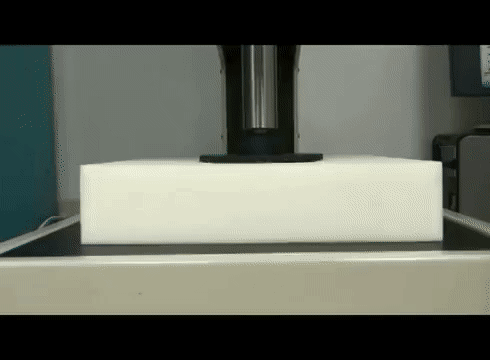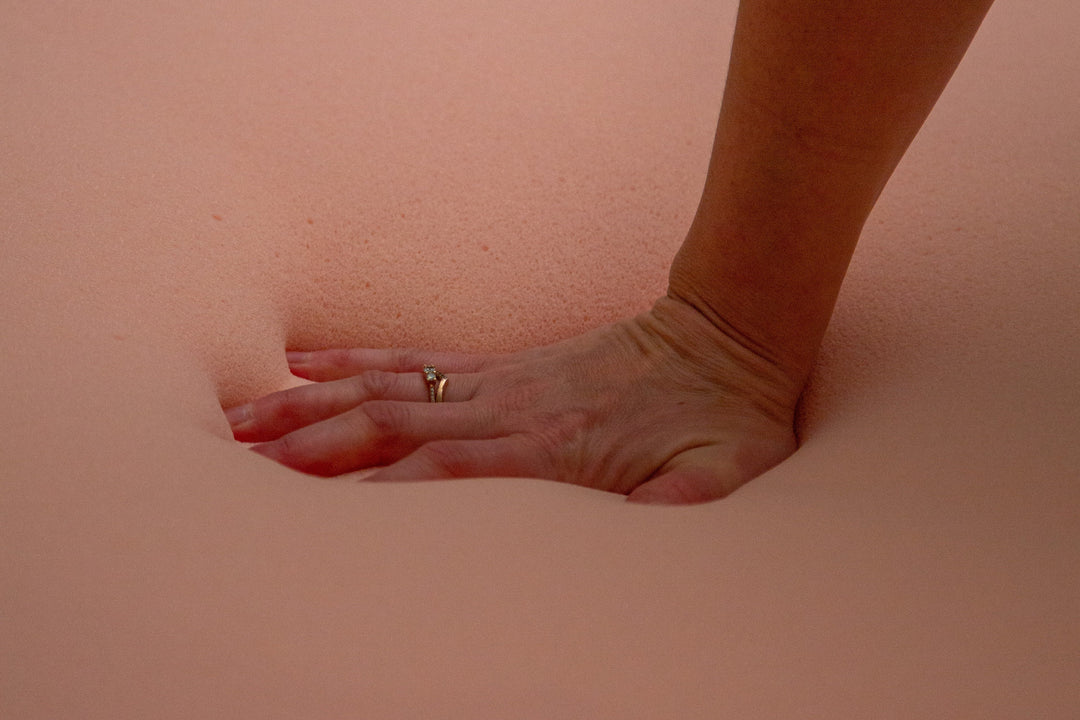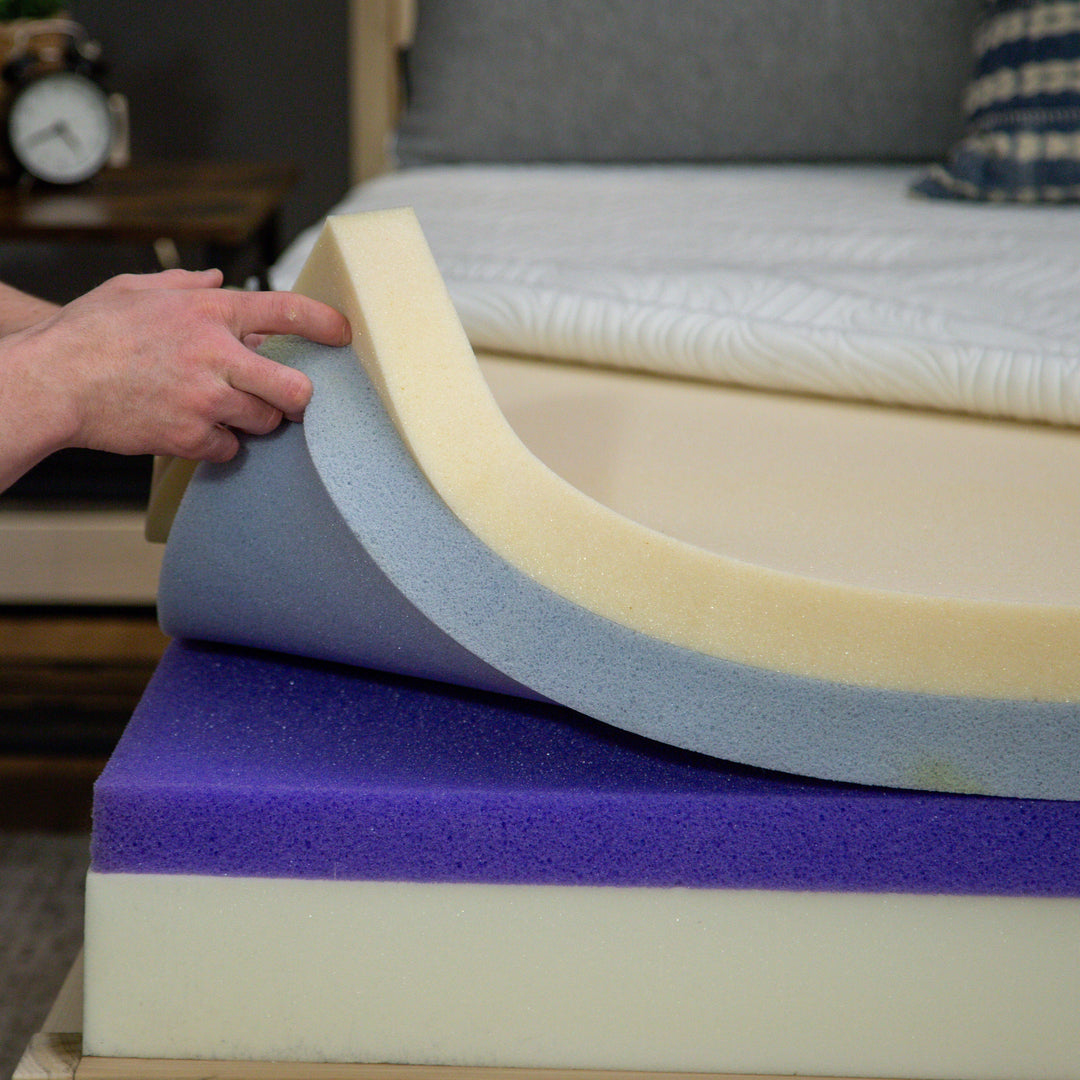FIRMNESS. What is it?
This shouldn't come as a surprise, but firmness varies from foam to foam. In the show room, you're usually told that one of three options constitutes the "soft" mattress offerings, while two others make up the store's "firm" selection. But what does that mean objectively?
To get to that answer, you need to know how firmness is measured. In the case of polyurethane foams this is determined by a physical property called the Indentation Force Deflection, or IFD. You may also hear it called the Indentation Load Deflection, or ILD. These are the same thing. While this can sound quite technical, all it refers to is the number of pounds of weight (or force) required to condense a 4-inch thick sample of the foam to 75% of its original height. Translation? The higher the IFD, the firmer the foam.

IFD is the scientific measure of firmness. The actual feel of the foam type is dependent upon an individual's perception of what is soft or firm.
When it comes to feel, it’s not always apples to apples. Therefore, we always encourage our customers to try their options prior to purchasing whenever possible.
For reference, though, below is a table showing the specifications (IFD included!) of each of our comfort layers.
| Foam Type | Density | IFD |
|---|---|---|
| Copper-Infused Memory Foam | 2.6 lbs/ft3 | 12 |
| High Support Memory Foam | 2.5 lbs/ft3 | 16 |
| Medium-Soft Hybrid Foam | 2.5 lbs/ft3 | 11 |
| Medium-Firm Hybrid Foam | 2.9 lbs/ft3 | 15 |
| High Resiliency Foam | 2.6 lbs/ft3 | 23 |
FIRMNESS ≠ DENSITY
Before moving on, we’d just like to clarify a common misconception. As noted in the table above above, firmness is not the same thing as density when it comes to foam. Two samples can have equal densities and be engineered to have different IFDs. Density is an entirely separate property with its own importance, which we’ll dive into in the next section.




